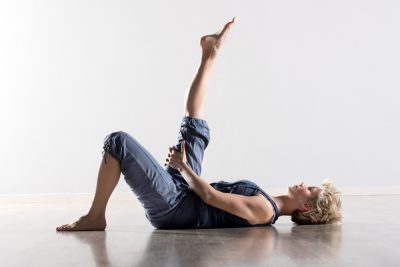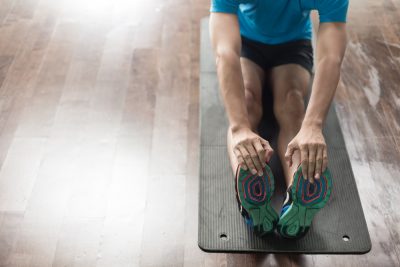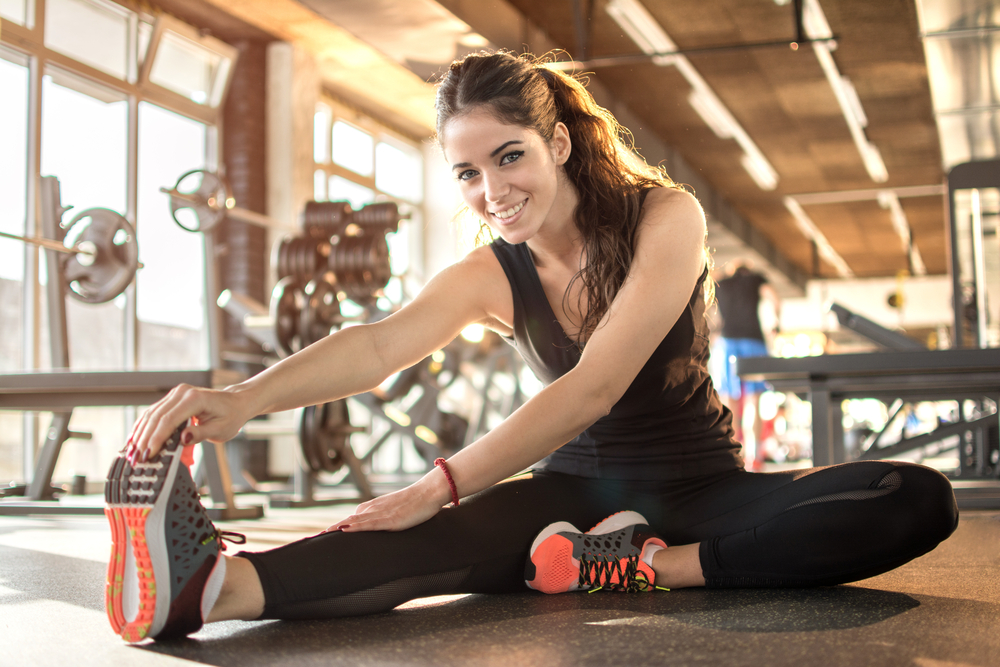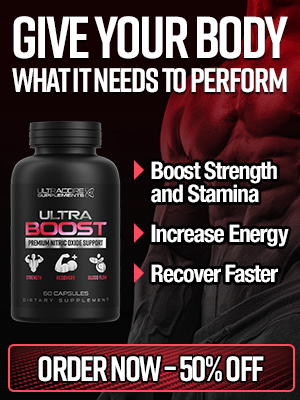Obviously, we all know where to point at if someone asks you to identify where your hamstring is.
But do you know that the hamstring comprises of multiple muscles and not just one? But what is the role of these muscles in training performance?
Your hamstring muscles are connected directly with the motion in your pelvis, legs, hips, and lower back, so it’s important that you stretch them out regularly.
Injuries to these muscles would keep you away from the studio way longer than you would appreciate, and sadly, they are susceptible to injuries.
Flexible hamstring would help prevent such injuries, while still keeping your muscles in good health.
So, yes, it is important to stretch your hamstring.
Benefits of Flexible Hamstrings
Improves Athletic Ability
When you have flexible hamstrings, it will reflect greatly in any sport you engage in, especially tennis. You can particularly work on your hamstring flexibility for tennis games by constantly practicing the yoga pose termed “downward facing dog.”
To properly execute this pose, you need to place your hand flat on the floor, while your feet are firmly rooted on the floor so that you can assume a V shape. Maintain this pose for about 3 minutes to get full results.
Stops Lower Back Pain
If you have tight hamstrings, it would be almost impossible not to have lower back pains. That’s because tight hamstrings would reduce your pelvis movement and put more pressure on your lower back.
 Regularly stretching your hamstrings would loosen your muscles and reduce lower back pain because the muscles have become stronger and more flexible.
Regularly stretching your hamstrings would loosen your muscles and reduce lower back pain because the muscles have become stronger and more flexible.
Let’s discuss the killer stretches that would help guard your hamstrings.
Before figuring out the exact stretch to strengthen and increase your muscles’ length, there is a bit of caution you must take note of before proceeding with any of the stretches.
The hamstring is a fragile group of muscles, so you should take care not to flex it too hard, finding the right balance would be perfect.
That way, you are sure of achieving results, while keeping your hamstring safe in the process. It’s very necessary you adhere to this because an injury to the hamstring can be quite painful.
Standing Cross-Leg Toe Touch
This is a very classic version of the “hands on your toes” nursery exercise, but obviously with a bit of modification. It would help strengthen and add length to your hamstring.
Here is a simple way to do it:
- Stand upright, and place one leg across the other while resting and keeping steady on one foot. Strengthen your equilibrium by balancing on a wall if you feel you need to.
- Slowly descend your torso, and try to touch your foot. As you are trying to reach for your toes, you can feel the stretch in your hamstring area.
- As soon as the feeling comes, remain in that position. However, you should note that you aren’t doing it wrong if your knees bend slightly. What’s more important is that you feel the sting of your hamstring stretching.
- Gently and slowly straighten yourself, then alternate between your left and right foot continuously until you feel you have exhausted your strength.
The Butterfly
Although the butterfly stretch may look to you like the usual squat exercise, it involves changing your toes’ position. This movement would help you strengthen and lengthen your hamstrings better.
Here is a quick way on how to do the butterfly stretch:
- Spread your legs in a width wider than your shoulders, while pointing your toes away from your body. Try and place your big toes in position with your knees if you can, but if not, it’s still okay.
- Take on a squat position with your back upright, and then slowly lower your torso, as though you were doing a squat. This would get you in a position where your legs and thighs are equivalent to the floor.
- Drive your body up using your heels, and go back to your beginning position. Do this exercise again about ten times.
The Hurdle Stretch
This is considered another common stretch, but with a bit of modification that allows it to focus more on the hamstring.
It’s quite simple to do:
- Comfortably sit on the floor, while one of your legs is outstretched with your knees straight and firmly planted on the ground.
- Place the second leg in so that you can feel the foot’s bottom in the thigh of the extended leg.
- Lower your torso to the extended leg, while placing your arms in your front. The goal is to have your chest and extended leg in contact with each other, instead of touching your toes. It may take you a few minutes and rounds to get this particular stretch with full extension if your hamstrings are particularly firm. To make it faster to achieve full extension, you should first go for the big toe, since the objective is to grip your foot with your fingers.
The High Kicks
While you may not understand how this can impact your hamstring, a try out would leave you convinced. It doesn’t just help with lengthening and stretching your hamstring; it aids in improving your hip mobility in general.
A quick breakdown on how to do this:
- Stand straight and extend one of your hands to your front, but parallel to the floor.
- Dangle the opposite leg ahead in a kick-like movement, but make sure your leg isn’t bent or your knee when you swing upwards.
- When you swing the leg upwards, the plan is to touch your toes with your extended hand. But it’s okay if it doesn’t reach, with constant practice, you would achieve that in no time. When you swing your leg, try and place it high enough to involve your hamstring muscles.
- Slowly bring back your leg to its normal position, the same with your outstretched arm. Do the same with the other leg and hand, and try it for about five repetitions each of both legs.
Seated Toe Touch
We all communize sitting on the floor, but it has proven to be the easiest and maybe the most effective way to strengthen and lengthen your hamstrings.
Here is how to do it:
- Sit properly on the floor, with your legs outstretched straight in front of you, and keep a neutral spine.
- Lean forward so you can touch your toes, and you may want to ensure that your leg is straightened out. And your knees straight and securely planted on the floor.
How Does Hamstring Affect Your Athletic Performance
Three membranes make up the hamstring:
- Biceps femoris
- Semitendinosus
- Semimembranosus
These membranes begin at the hip bone and end at the bones right underneath the knee. The importance of the hamstring is obvious at this point: it doesn’t just aid in the variety of movements where the legs join to the hips but play a vital role in the knees’ bending.
 Your hamstring facilitates your speed in the muscles of your lower body. It is responsible for vigorous motions like jumping and sprinting; at the same time, it is also vital for slowing you down.
Your hamstring facilitates your speed in the muscles of your lower body. It is responsible for vigorous motions like jumping and sprinting; at the same time, it is also vital for slowing you down.
When these muscles are involved in moving your body in a fast way, there is a higher risk of injury when forced to work in a way that exceeds their capacity.
For instance, if you have been sitting on a chair for long hours, and you are suddenly asked to stand up and run, that right there is a ticket to injury. That’s because your muscles have been too relaxed and cannot work that soon.
Different Hamstring Injuries
If you have forcefully pulled on your hamstring, you can perfectly describe the painful sensation that comes with it. But if you have not noticed, it is the prickling pain you feel at the back of the leg, just where it joins the buttocks.
Majority of hamstring injuries happen when you strain the point where the hamstring muscles connect to the tendon that links the leg muscles to the hip muscles.
The severity of injury would determine how much of your movement would be restricted. It can sometimes be as serious as making even walking a nightmare, but in other cases like a minor strain, you won’t even notice any pain when moving around.
However, when you try to move any of the hamstring muscles, you would feel the incapacitating pain.
Most people get why they need to stretch, but they don’t understand the importance of regularly stretching the hamstring.
If you stretch your hamstrings before and after every type of workout, it makes your muscles stronger and more flexible.
Although some people see it as a waste of time, if you don’t stretch regularly, it can cause your muscles to be stiff and tight. When you have stiff muscles, you become more prone to injuries like a hamstring tear.
In that way, when your muscles are properly stretched, it remains more flexible, and sudden movements won’t cause any major tear or injury to your hamstrings.
The body is a complicated one, so tight hamstrings can lead to instability in the knees and pain in the lumbar spine.








COMMENTS